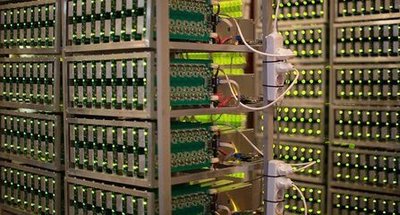In the ever-evolving landscape of cryptocurrencies, mining machines stand as the unsung heroes, powering the networks that underpin digital currencies like Bitcoin, Ethereum, and Dogecoin. These sophisticated devices are not mere gadgets; they are the engines of innovation, transforming raw computational power into valuable blockchain blocks. As companies specialize in selling and hosting these machines, understanding their core hardware becomes essential for enthusiasts and investors alike. Imagine a world where every transaction is verified not by banks, but by these relentless machines humming in vast data centers. This article delves into the heart of modern mining machines, uncovering the powerhouse components that drive efficiency and profitability in the crypto realm.
At the core of any mining machine lies the processor, often an Application-Specific Integrated Circuit (ASIC) tailored for cryptocurrencies such as Bitcoin. Unlike general-purpose CPUs found in everyday computers, ASICs are designed with laser-focused efficiency, crunching complex hashing algorithms at speeds that leave traditional hardware in the dust. For Bitcoin mining, these chips perform SHA-256 computations relentlessly, turning electricity into potential fortune. Yet, the story doesn’t end there; Ethereum miners might opt for GPU-based rigs, leveraging the parallel processing prowess of graphics cards to handle the Ethash algorithm. This diversity in hardware reflects the unpredictable nature of crypto mining, where adaptability is key. Hosting services amplify this by providing secure, cooled environments for these machines, allowing users to mine ETH or DOG without the hassle of setup.
Picture a bustling mining farm, rows upon rows of rigs glowing under fluorescent lights, each one a testament to human ingenuity. A mining rig, typically comprising multiple miners connected in harmony, exemplifies burstiness in operation—intense computational spikes followed by brief lulls. These setups demand robust power supplies, capable of delivering stable voltage to avoid catastrophic failures. In the world of Dogecoin, which shares similarities with Bitcoin’s architecture, miners often repurpose existing hardware, blending creativity with necessity. The rhythm of a mining operation is infectious, drawing in novices and veterans who revel in the thrill of potential rewards from exchanges like Binance or Coinbase.

Beyond processors, cooling systems emerge as unsung saviors in the mining world. Overheating can cripple even the most powerful rigs, so advanced heat sinks and liquid cooling solutions are integrated to maintain optimal temperatures. For Ethereum’s proof-of-stake transition, hardware demands might shift, yet current GPU miners remain vital, their fans whirring like a symphony of progress. This hardware evolution adds layers of excitement, as users navigate the volatile markets of BTC and ETH, balancing costs against yields. Mining farms, vast arrays of interconnected miners, exemplify scale—hundreds of machines working in unison, hosted in climate-controlled facilities that ensure uninterrupted operation.
The intricacies of a miner’s anatomy extend to memory and storage, where high-speed RAM and SSDs facilitate seamless data processing. In the case of Dogecoin, which thrives on community-driven mining, even modest rigs can participate, fostering a rich tapestry of global involvement. This unpredictability keeps the ecosystem vibrant, with hardware choices influencing profitability on exchanges. As companies offer hosting for these machines, they bridge the gap for those without space or expertise, making crypto mining accessible yet thrillingly complex.
Delving deeper, the power efficiency of modern mining hardware marks a pivotal advancement. Gone are the days of energy-wasting behemoths; today’s models boast higher hash rates per watt, crucial for sustaining operations amid fluctuating electricity costs. For Bitcoin enthusiasts, this means more sustainable mining, while ETH miners adapt to network changes, ensuring their rigs remain competitive. The burstiness of mining—sudden surges in difficulty or price—demands hardware that can scale effortlessly, turning potential chaos into calculated opportunity.

In conclusion, the core hardware of modern mining machines weaves a narrative of technological triumph, from the specialized ASICs for BTC to the versatile GPUs for ETH and DOG. As mining farms and rigs evolve, they not only power cryptocurrencies but also inspire a new generation of innovators. With hosting services simplifying entry, the future of mining brims with potential, urging us to uncover more layers of this digital powerhouse.